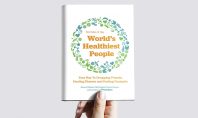Training the Next Generation of Doctors & Nurses
Soon, we could be facing a frightening doctor shortage unlike any we’ve had in recent history. The problem: More people than ever need care, thanks to an aging population of Baby Boomers, but there’s a shrinking pool of qualified health care professionals.
A 2017 report projects that there will be a shortfall of 105,000 primary care and specialist physicians in the U.S. by 2030 — and that over one-third of the nation’s doctors will be 65 or older within the next decade.
But the situation is improving, thanks to St. Luke’s aggressive mission of educating and training the next generations of health care professionals — physicians, nurses, physician assistants, and others — just as it’s done for the past 145 years.
In 2006, St. Luke’s was expanding and wanted to get more students into the pipeline. But rather than create its own school from scratch, the hospital chose to capitalize on its decades-long relationship with Temple University.
“Many Temple medical students would come here for clinical rotations,” says Joel Rosenfeld, MD, Chief Academic Officer at St. Luke’s and Senior Associate Dean of Lewis Katz School of Medicine at Temple University. “About 13 years ago, we became a clinical-care campus; medical students could take all of their clinical courses here as well as electives.”
In 2011, St. Luke’s became the area’s only regional medical school campus. Medical students can spend their first year at Temple, and then finish their next three years at St. Luke’s. “In the second year, they study diseases of the various body systems, and are taught by members of the St. Luke’s medical staff,” Dr. Rosenfeld explains. “Their third and fourth years are comprised of clinical rotations such as OB-GYN or pediatrics.”
The program has already graduated four classes—that’s nearly 120 new doctors—and many are coming back, applying to be on staff at St. Luke’s.
Andrew Goodbred, MD, is a Temple grad who studied at St. Luke’s. The Lancaster native received his undergraduate degree at Moravian College, and then entered Temple’s medical school. “I spent my first two years there,” he says, “and then completed my clinical rotations as well as my residency in family medicine at St. Luke’s.”
Dr. Goodbred is now spearheading the effort to bring a new family medicine residency program to St. Luke’s Anderson Campus and will be the associate program director after it’s officially accredited.
What kept him here? “When you’re an undergrad, it’s easy to get lost in the shuffle. But from the beginning, I never felt that way. The educators and staff at St. Luke’s readily share their knowledge and experience with students, and help bring them along, ” he says.
Of course, medical school is just the first step; it’s followed by residency and fellowship programs, of which St. Luke’s has nearly 30 accredited graduate medical education programs.
“Medical school graduates who wish to be board-certified or licensed must go through a 3-5 year residency for advanced training, depending on the specialty, such as three years to be an internal medicine attending or five years to be a general surgeon,” says James P. Orlando, Ed.D., Designated Institutional Official for Graduate Medical Education at St. Luke’s. Fellowship studies focus more intently on sub-specialties. For example, an internal-medicine resident might concentrate on diseases of the endocrine system.
Currently, Dr. Orlando says, 226 residents and fellows train in 28 accredited graduate medical education programs at St. Luke’s, “but we plan to train over 400 residents and fellows within the next five years in response to our community health needs assessment.” And not just more residents —St. Luke’s plans to add more accredited programs, such as family medicine, dermatology, psychiatry, neurology and ear/nose/throat (ENT).
He confirms Dr. Rosenfeld’s observation about retention. “We’ve found that many of the medical students and residents who train at St. Luke’s want to work here when their education is complete,” he says. “They also find a very tight sense of community, inside and outside the hospital setting. When they work where they live, they can see the impact they make.”
For more information on education at St. Luke’s, visit sluhn.org/som
Q: Can you name the oldest nursing school program in the US?
A: If you said anything except “St. Luke’s School of Nursing,” you’d be 100% wrong.
The school was founded in 1884, with just nine students; three of them comprised its first graduating class in 1886. Back then, says Angela Daniel, enrollment coordinator, “the only pre-requisite was ‘a good school education,’ and students got free tuition, room-and-board, and uniforms—in exchange for working in the hospital itself.” The free ride ended in 1939, and nursing students began paying their own tuition: $98.50 for the complete program.
Obviously, plenty has changed, but the nursing school’s dedication to educating healthcare professionals has not. Today’s students generally complete their pre-requisite studies at local community or four-year colleges, then finish at St. Luke’s. The 20-month program includes 900 clinical hours, with hands-on experience and numerous specialty rotations.
The school offers two tracks for nursing students. One offers classes Monday through Friday (including about 18 hours per week of clinical work) and confers a degree in 20 months. Another is ideal for students who want a more flexible approach. “Those sections meet from 6 pm to 9 pm on Tuesdays, Wednesdays and Thursdays; and in 12-hour sessions for two or three weekends per month,” Daniel says.
For more information, visit slhn.org/son, email [email protected], or call Angela Daniel at 484-526-3443.




















